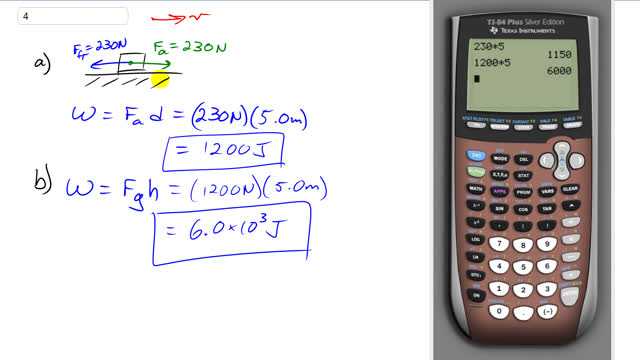
A 1200-N crate rests on the floor. How much work is required to move it at constant speed
- 5.0 m along the floor against a friction force of 230 N, and
- 5.0 m vertically?

In order to watch this solution you need to have a subscription.
This is Giancoli Answers with Mr. Dychko. I drew a free-body diagram with just the horizontal forces on it. There's a friction force of 230 newtons opposing the direction of motion and there must be an applied force to the right to keep it going in motion. And since it's at constant speed, this applied force has to be equal to the friction force. So the work done by the applied force is the force times the displacement, and these displacement and the force are parallel so that means, we don't need to take any angles into account, we just multiply the numbers; 230 newtons times 5 meter displacement, which is 1200 joules with two significant figures. And then in part (b), we are asked— "what would if you were to lift it up 5 meters?"— and we assume at constant speed, so that means the up force should equal the force of gravity, in order to have constant speed and not accelerated, in which case, the force applied upwards will be 1200 newtons and times 5 meters which is 6.0 times 10 to the 3 joules. And I wrote this in scientific notation because writing 6,000 would have only one significant figure so to explain that there should be two significant figures, I put 6.0 times 10 to the 3.
230 times 5 is 1150 but why ur answer is 1200J????????????????????
Hi, thank you for the question. The numbers being multiplied each have 2 significant figures, which means the answer should also have 2 significant figures. 1150 J (3 significant figures) gets rounded to 1200 J (2 significant figures).
All the best,
Mr. Dychko